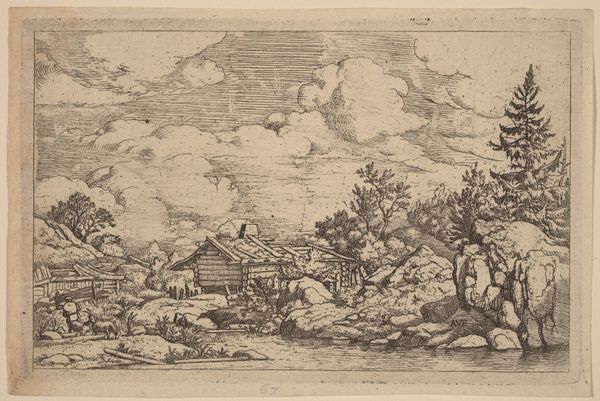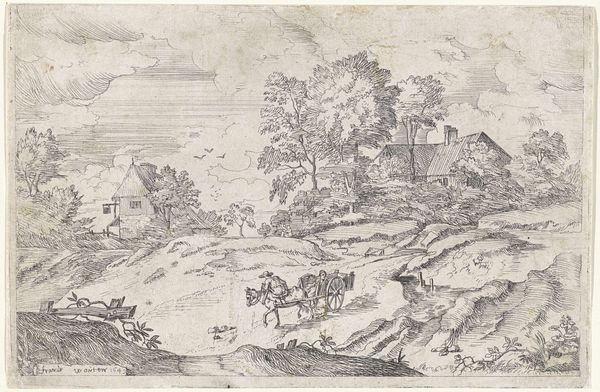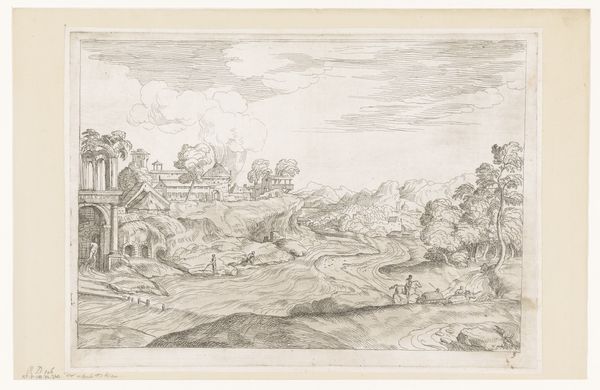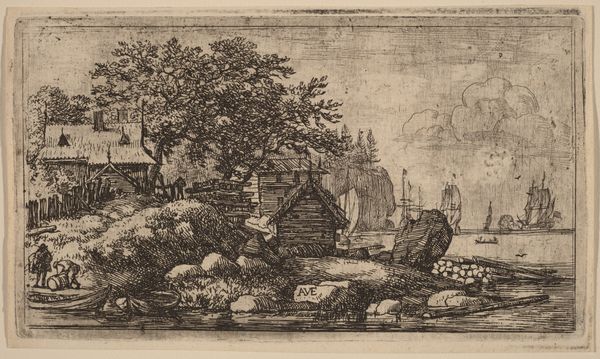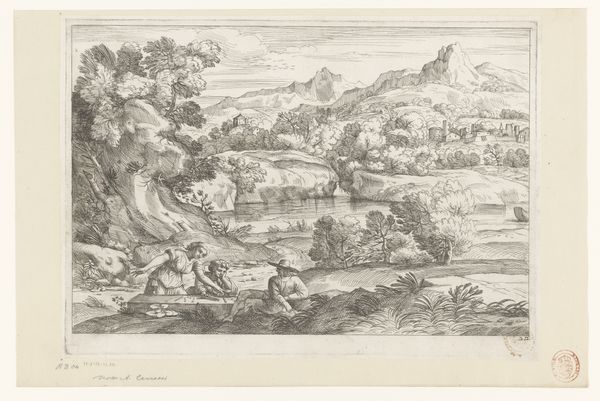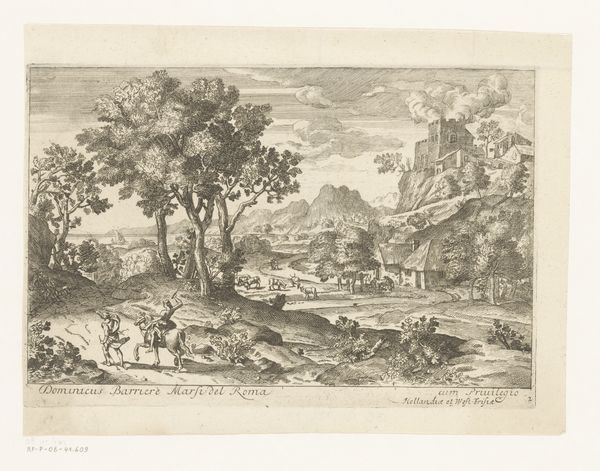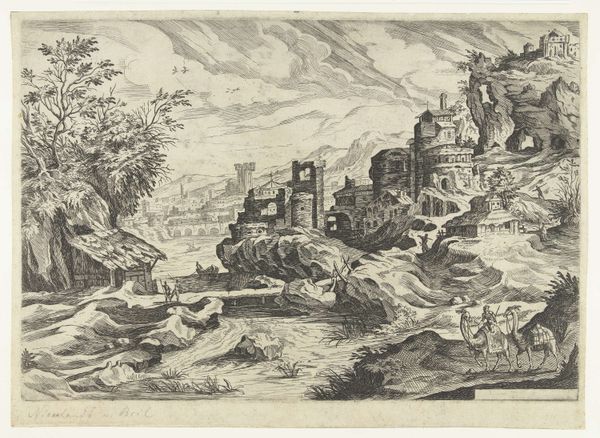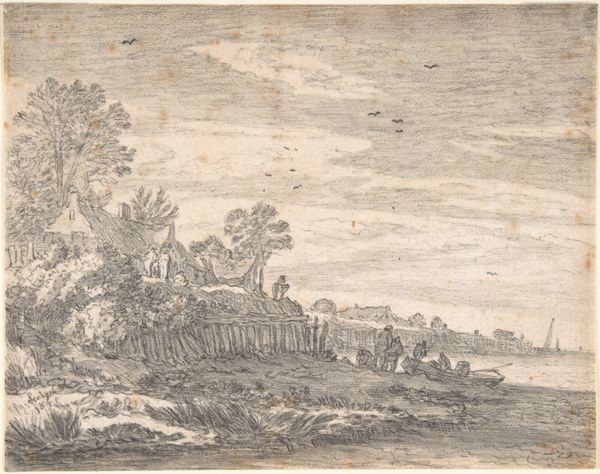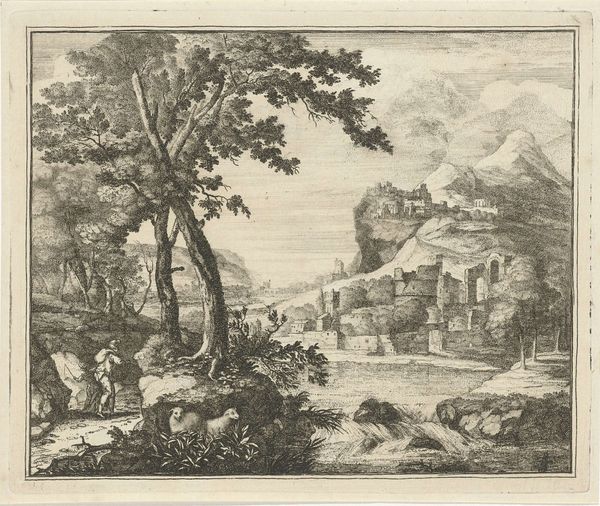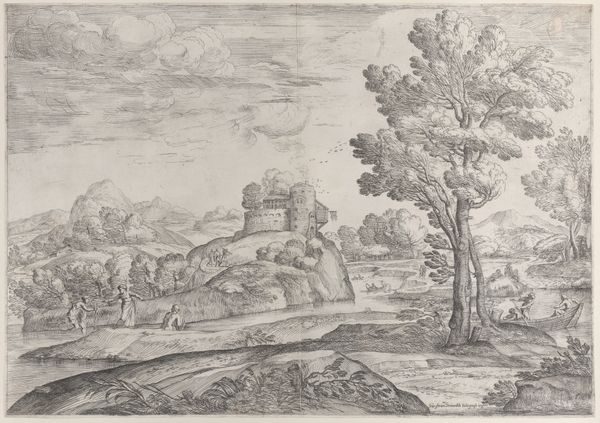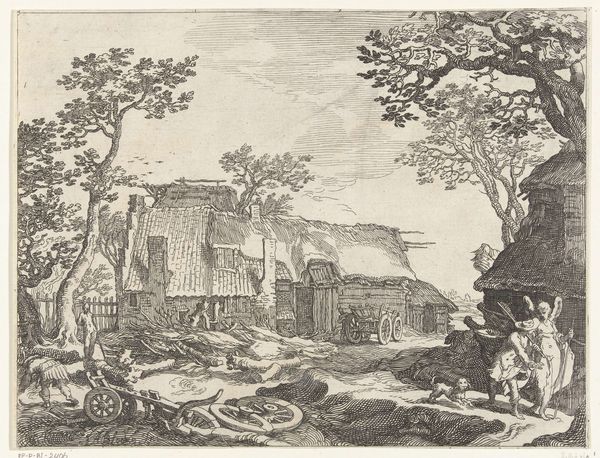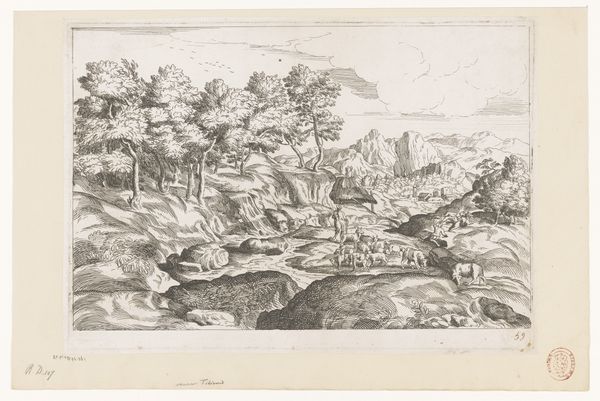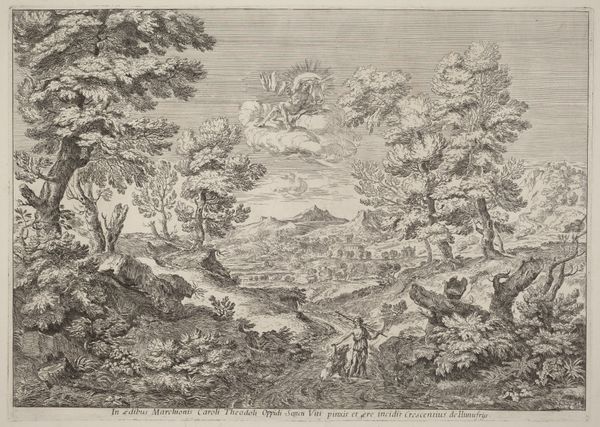
drawing, print, etching, ink
#
drawing
#
dutch-golden-age
# print
#
etching
#
landscape
#
ink
Dimensions: Plate: 5 7/16 × 7 7/8 in. (13.8 × 20 cm) Sheet: 5 15/16 × 8 3/8 in. (15.1 × 21.3 cm)
Copyright: Public Domain
Allart van Everdingen made this print, "The Watermill," using etching, a form of printmaking, where lines are incised into a metal plate with acid, then filled with ink and printed. Notice the contrasts in texture that Van Everdingen achieves. See how he renders the rough-hewn logs of the mill, or the craggy rocks in the foreground? These elements are set off against the smoother areas of the sky and water, creating a rich visual experience. Etching requires a physical engagement with the material, and this process infuses the image with a sense of labor. The artist's hand is evident in every line. The scene depicts a watermill, a site of industry and a nod to the economic realities of 17th century Holland. This was a period of increasing industrialization and the print subtly acknowledges the role of human labor in transforming the landscape. Paying attention to materials, process and social context enables us to understand the multiple layers of meaning embedded in the artwork.
Comments
No comments
Be the first to comment and join the conversation on the ultimate creative platform.
